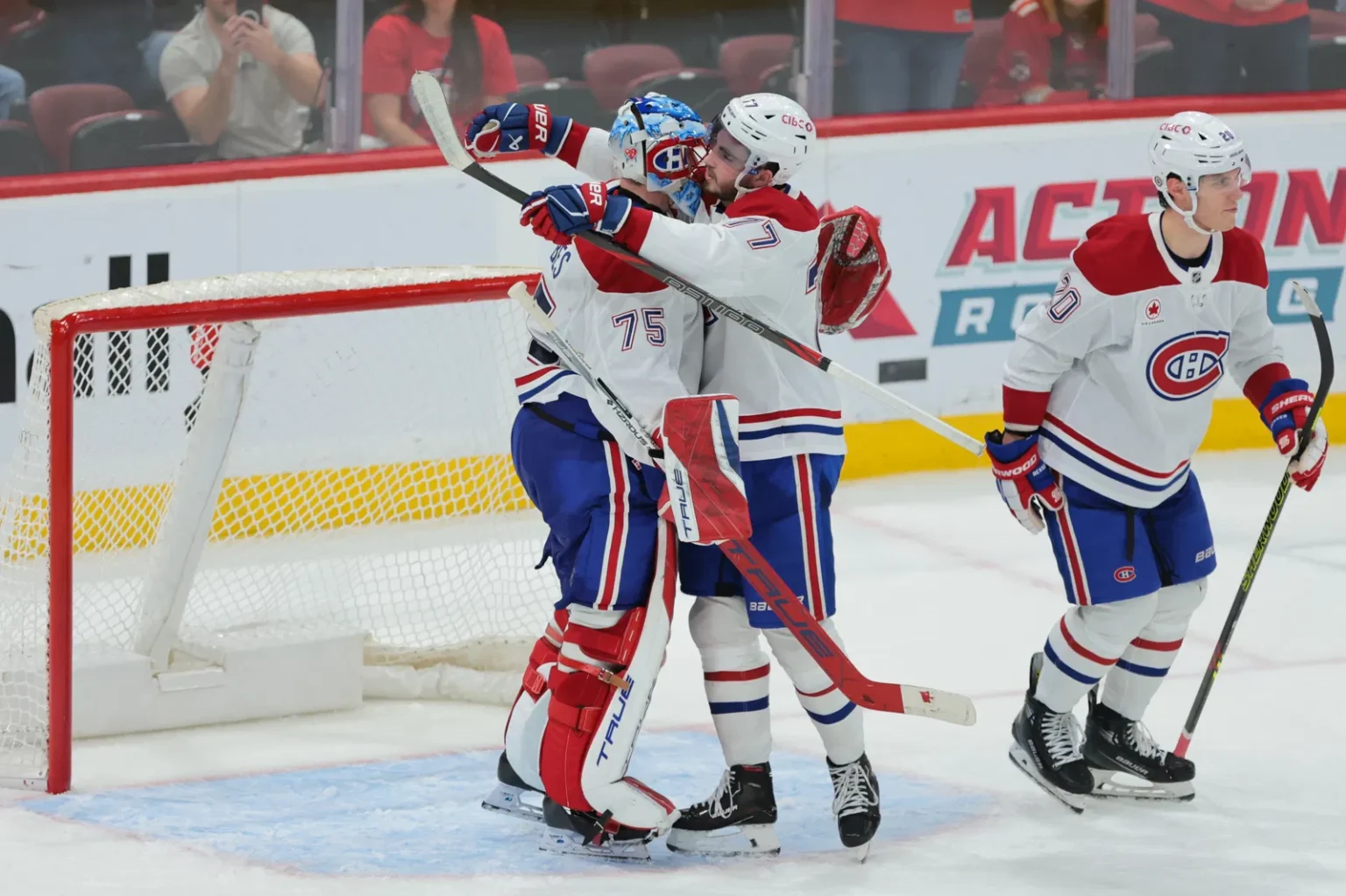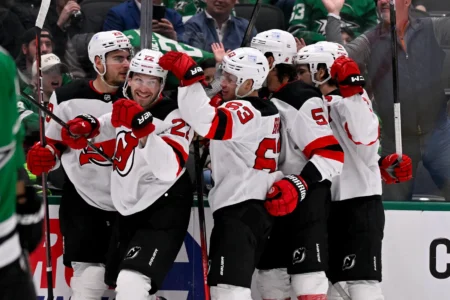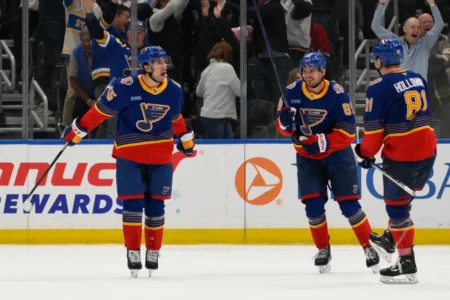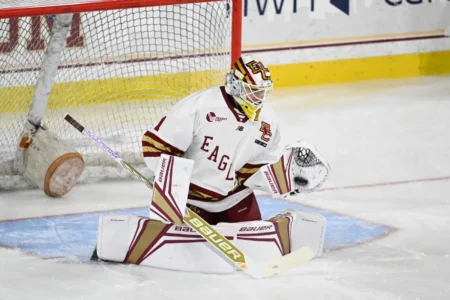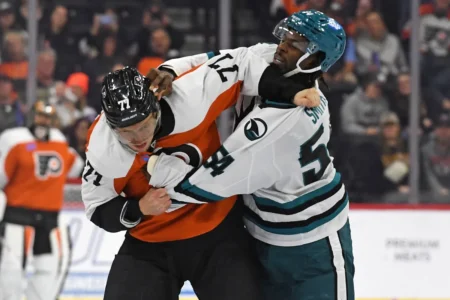The third installment of the popular Crave documentary The Rebuild: Inside the Montreal Canadiens dropped promptly on Thursday at 12:01 AM, and it’s just as good as the first two episodes. This week, the series focuses on two elements that helped turn the team’s fortunes around last season: the acquisition of Alexandre Carrier and the arrival of Jakub Dobes with the team.
This time around, the cameras also give a peek at what life is like for the players who are plying their trade under Pascal Vincent with the Laval Rocket. We take a road trip to Utica with the AHL club, highlighting the differences between the life of a minor leaguer and an NHL pro. While the Canadiens’ players are in Florida, getting ready to face the defending Stanley Cup champion Florida Panthers, the farm team is in Utica, taking on the Comets. Speaking about their destination, former Habs prospect Logan Mailloux says it’s a “get in and get out” city, in stark contrast with the Canadiens’ Quebecers taking a stroll on the beach in Sunrise.
Canadiens' Nick Suzuki Has Kind Words For Sidney Crosby
Canadiens: Fowler Near Top Of Best Affiliated Goaltenders
Canadiens: Expect Juraj Slafkovsky Breakthrough Season
The look inside the life of the Rocket player probably came because goaltender Dobes was recalled, unlike Mailloux, Joshua Roy, or Rafael Harvey-Pinard. It’s interesting to see the players on the bus ride to Utica, playing cards and just killing time, much like the Canadiens do on their road trips, but in far less comfortable settings.
Speaking to the camera on the beach in Sunrise, David Savard, Carrier, Samuel Montembeault, and Mike Matheson discuss what playing in the AHL is like and how, once you’ve tasted the NHL, you don’t want to go back down. Interesting stat: only 20% of AHL players will go on to play 200 or more NHL games in their career. This statistic shows how much more work is left once an NHL team drafts a player.
It’s interesting to hear that it was Dobes who asked to do a rookie lap, something rookie netminders do not normally do, before he got his baptism of fire against the Panthers. The segment on that game also reminds us that, on top of the rookie goaltender’s fantastic performance in Sunrise, the win was also the result of a brace of goals by Kirby Dach, something people might have forgotten amongst the negativity the big center faces because of multiple injuries. It’s great to see just how pleased his teammates are for him and how he comes to the bench to celebrate to the sound of numerous “Alberta beef!” cheers; we even find out what that nickname is about.
The cameras also take us into the broadcasting booth, where Pierre Houle is as enthusiastic as can be about the Canadiens’ 4-0 win over the champions, multiplying the “Ma parole!”. There’s a reason why the duo he forms with Marc Denis is so well-loved in the Montreal market; his passion for the game transpires in every word.
This episode also captures blueliner Alexandre Carrier’s reaction to the trade that brought him home days before Christmas. While he was acquired on December 18, he didn’t get a chance to practice with the team before the post-Christmas road trip and tells the camera he was basically trying to survive that first practice, as it was a lot to take in.
The cameras are also privy to a Savard whiteboard coaching session in which the veteran blueliner breaks down the Panthers’ power play and explains to his younger teammates what the penalty kill has to do to neutralize it. The newly retired rear guard looks like a natural at the whiteboard, and it wouldn’t be shocking to see him remain around the team in some coaching capacity. Martin St-Louis also tells the camera that having players who can coach themselves like that is an indication that you are in a good place.
On the business side of things, we go behind the scenes of a marketing meeting in which France Margaret Belanger pitches the idea of a standing room section to owner Geoff Molson. We then see them go on a reconnaissance mission to the new section, which would actually be very high up and have an obstructed view. The aim is actually to provide a lower-cost experience for fans, with a more party-like feel. With a capacity of 21,105, the Bell Center is already the largest arena in the NHL, 1,388 seats ahead of the Chicago Blackhawks’ United Center, but the organization seems determined to increase that lead.
Canadiens stories, analysis, breaking news, and more! Tap the star to add us to your favorites on Google News, never to miss a story.
Follow Karine on X @KarineHains Bluesky @karinehains.bsky.social and Threads @karinehains.
Bookmark The Hockey News Canadiens' page for all the news and happenings around the Canadiens.
Join the discussion by signing up to the Canadiens' roundtable on The Hockey News.
Read the full article here





